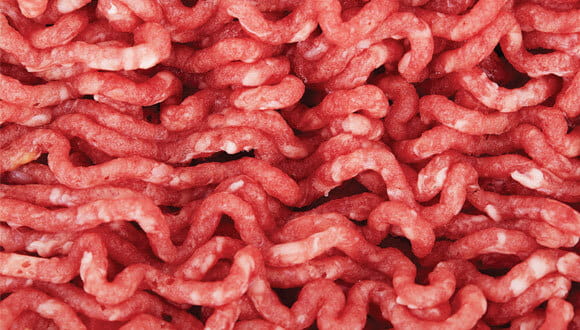Medium Rare Burger: How Pink Is Too Pink When It Comes to Ground Beef?
Oct. 26, 2021 - Katie McCallumThere's nothing like that first bite into a juicy, delicious burger. Sure, the center of the patty is pretty pink. But you order your steaks medium rare all the time. You should be able to safely order a medium rare burger, too, right?
In fact, though burgers and steaks may originate from the same cut of beef, their food safety rules are quite different. And understanding these rules may be the difference in getting sick and not.
Why is cooking a burger different from cooking a steak?
Germs can be present on food for a number of reasons. Contamination can happen during the food processing and handling process, but germs can also come from the animal or plant itself, according to the CDC.
What's more, because you can't see or even always smell these germs, there's no way to know if your food is contaminated or not — meaning you should operate under the assumption it is.
It's why you're always supposed to cook meat to a safe internal temperature and thoroughly rinse your fruits and vegetables.
Not all germs cause illness, but meat contaminated with harmful bacteria — including Salmonella, Listeria and certain forms of E. coli — can be dangerous to eat if not properly cooked. And this is especially important for those who are higher risk for foodborne illness, including very young children, older adults, pregnant women and anyone with a compromised immune system.
The good news, however, is that it's les likely for germs to penetrate through a piece of steak's surface and invade towards its center. In other words, germs typically remain and grow on the surface. That's why thoroughly cooking the outer layers of steak is usually sufficient to kill any harmful germs that may have initially been present.
If your medium rare steak has been cooked to a minimal internal temperature of 145°F and then allowed to sit for three minutes, it's safe even though its center is pink.
Ground beef is a different story, though, since its "surface" is a lot more complicated.
How pink is too pink for a burger?
A properly cooked medium rare steak isn't a concern, but medium rare ground beef is, according to the USDA.
When whole pieces of beef are ground together, any germs on the beef's surface get incorporated into the ground beef mixture — meaning there's potential for germs to be present throughout a burger patty, from the surface to the center.
For this reason, the safest way to eat ground meat is to wait until it's cooked all the way through and to its safe minimal internal cooking temperature. In the restaurant world, this typically corresponds to a burger that's considered well done — not a burger that's medium rare.
And it's not just ground beef that needs to be cooked this way. It's all ground meat, fowl and fish — turkey, chicken, pork, lamb and salmon included.
From burgers to meatballs to meatloaf, always use a food thermometer to be sure that ground meat is cooked to a safe internal temperature:
- Ground beef, pork, lamb: 160°F
- Ground turkey or chicken: 165°F
- Ground fish: 145°F
And if you're ordering a burger in a restaurant, request well done.
A burger can still be juicy even when cooked well done
When it comes to beef, we often think of a pink center as the root of all juiciness. But cooking a burger all the way through doesn't have to be synonymous with eating one that's dried out.
Here are six things you can to try to help keep burgers moist while still cooking them to a safe temperature:
- Add a divot to the center of your patties. We've all had the center of our burgers puff up while cooking them. It's unfortunate because it results in the thinner edges of the burger getting more cooking time than needed, increasing the chance of your burger drying out. You can easily help prevent this by using your thumb to create an indent in the center of the patty.
- Flip once and leverage your food thermometer. Admittedly, it's not as simple as it sounds, but mastering your cooking technique is probably the best way to safely cook burgers without overcooking them. Between knowing how to control the heat of your grill, stove or oven and consistently making your patties the same size, you'll know when to make that one-and-only patty flip and when to test if it's done.
- Avoid compressing the patties with a spatula as they cook. We've all seen the juices literally drip out as we do it, but we've all still done it. Resist the urge.
- Add an ice chip to the center of your patty. Believe it or not, food experts say that adding an ice chip into the center of your patty is an easy trick for keeping a well-done burger juicy, especially for larger patties. As the meat heats, the ice melts — helping to prevent the burger from drying out, likely by creating steam that cooks the inside of the burger.
- Add Greek yogurt to your patty mixture. Sure, starting with fattier ground beef or adding fatty ingredients like mayo or butter can help keep a burger moist. But this isn't the healthiest option, especially if you eat burgers frequently. Try adding a tablespoon or two of low-fat Greek yogurt instead. Full-fat Greek yogurt may provide even more moisture, but keep in mind that it also adds quite a bit more saturated fat, too.
- Don't forget that toppings and condiments add moisture, too. No burger is complete without condiments and toppings. From tomatoes, lettuce and mustard to avocado and sautéed onions, don't forget that what you choose to pair with your patty can make a burger juicy, too.








